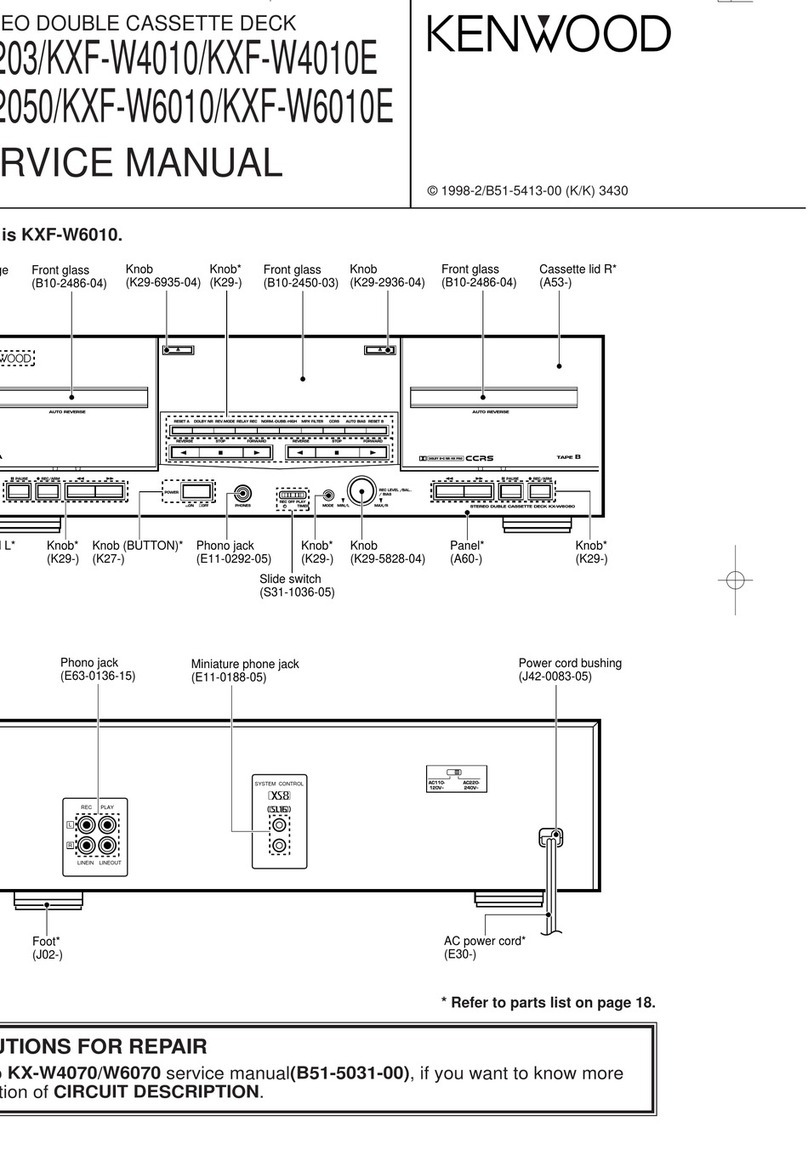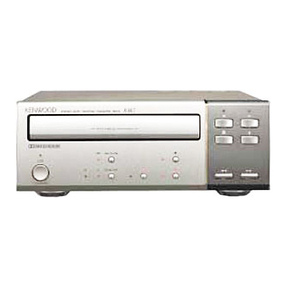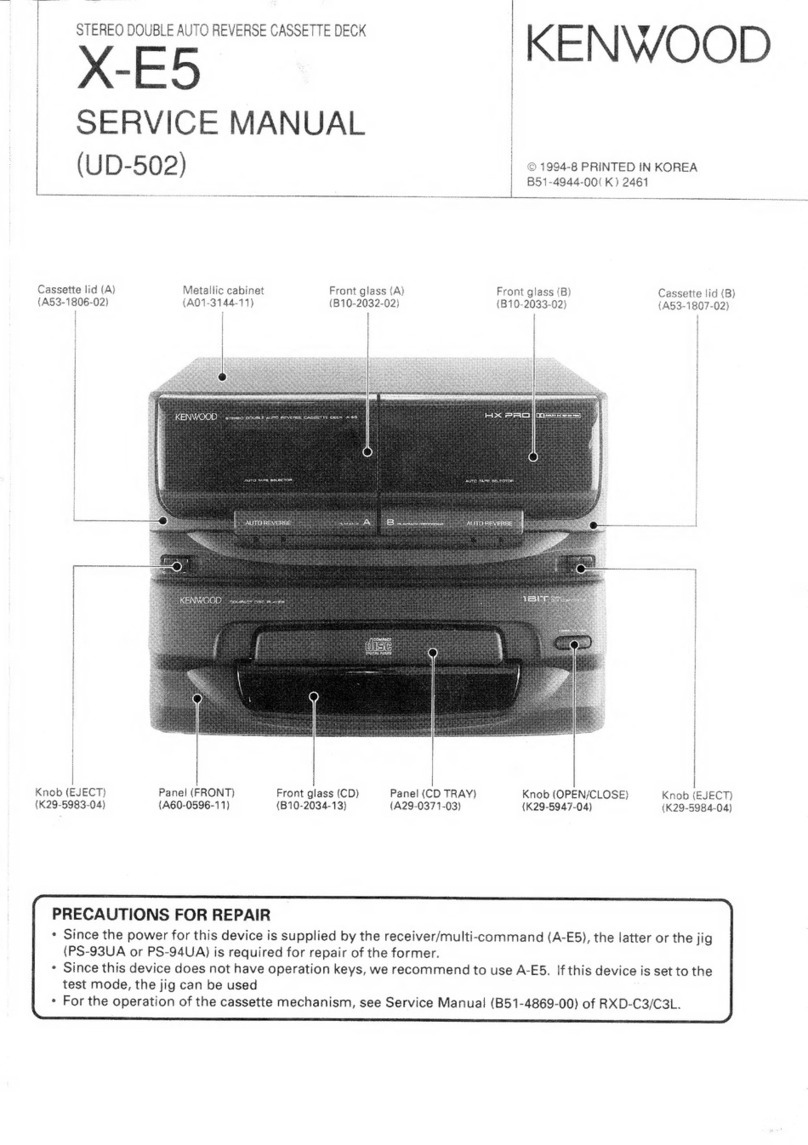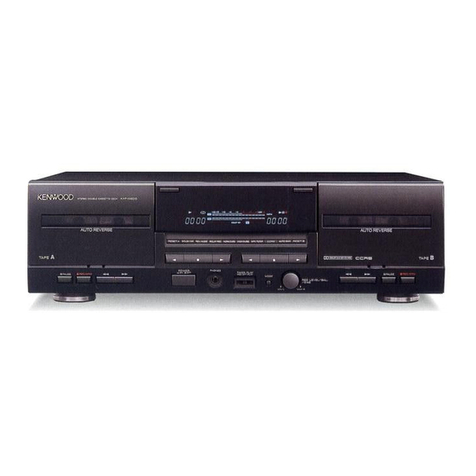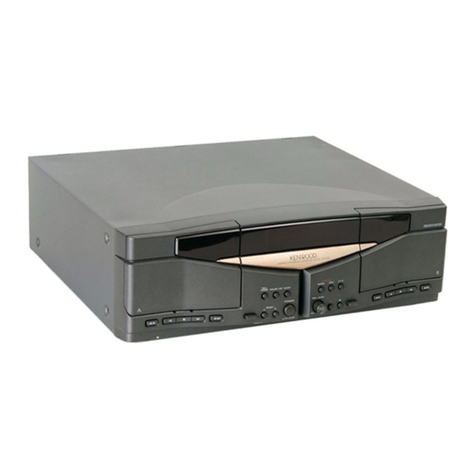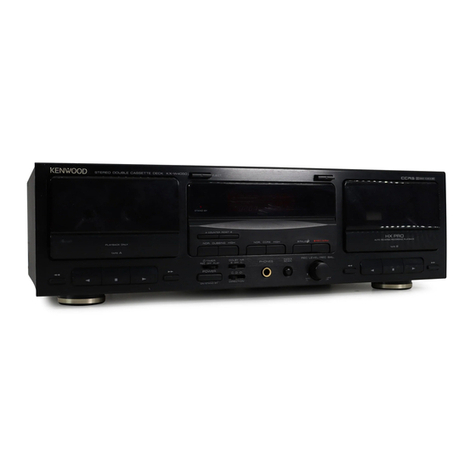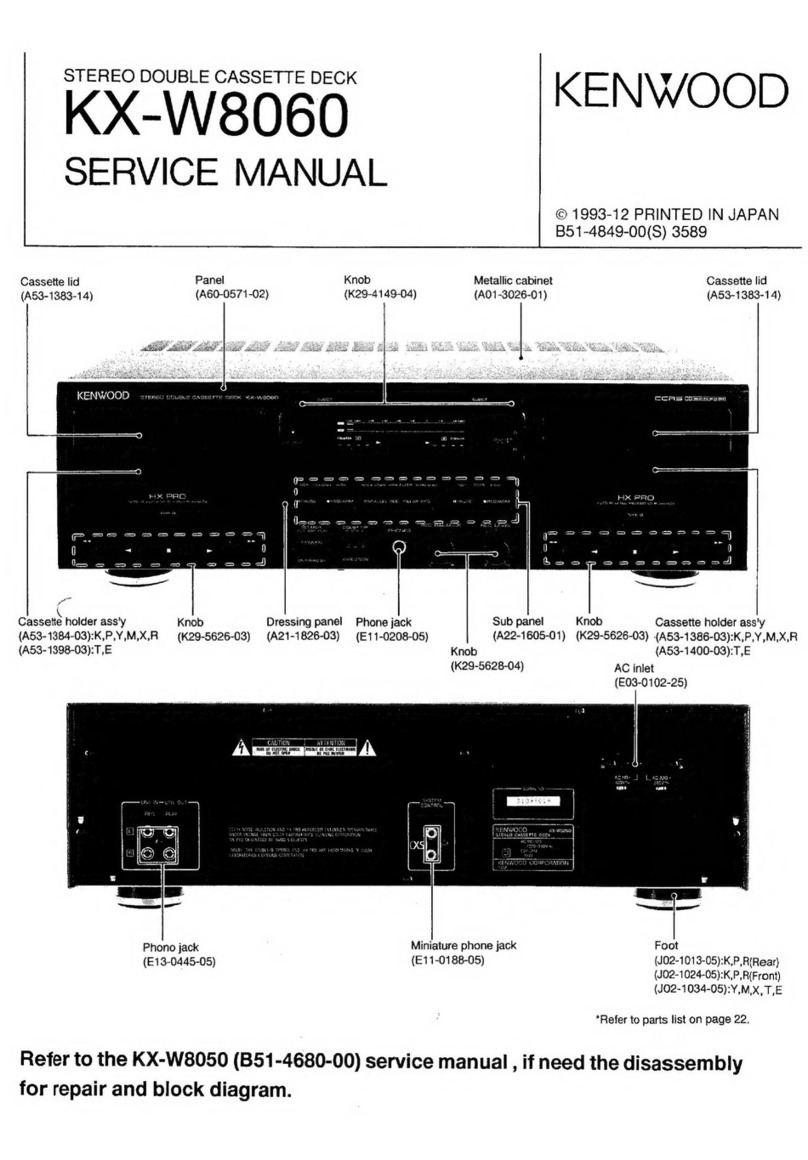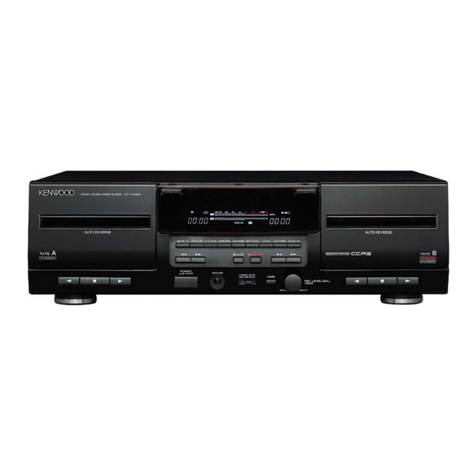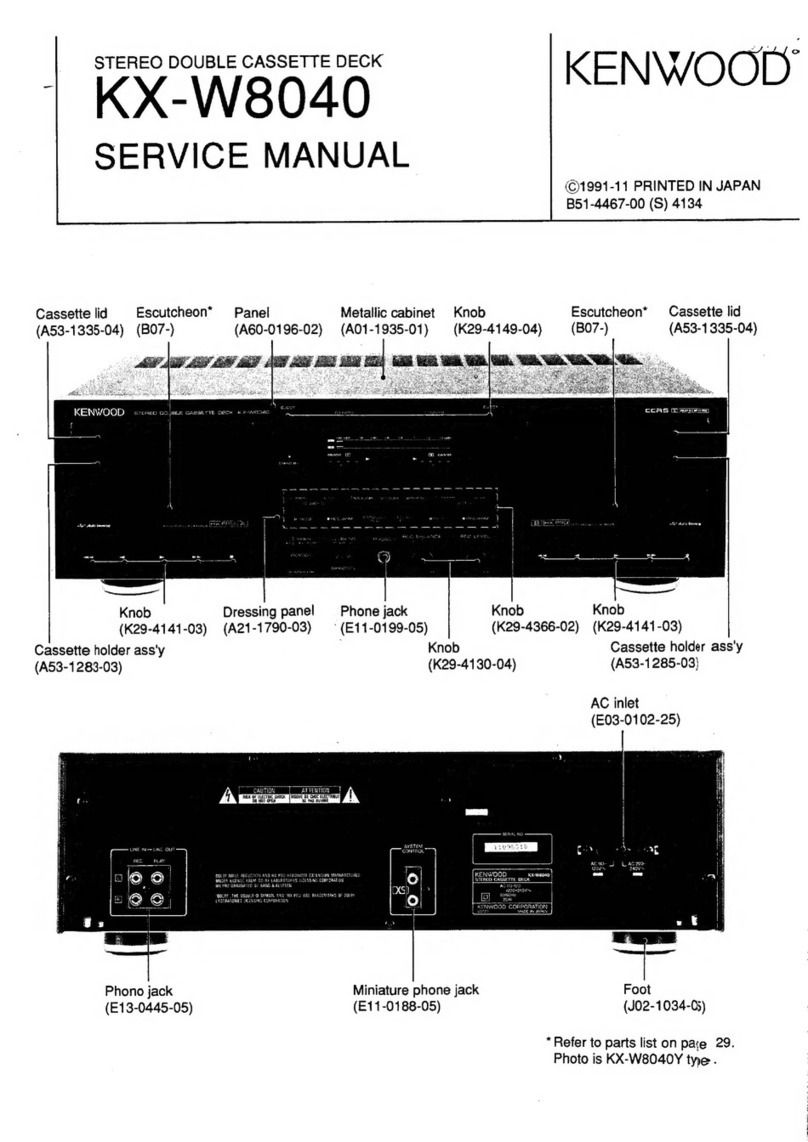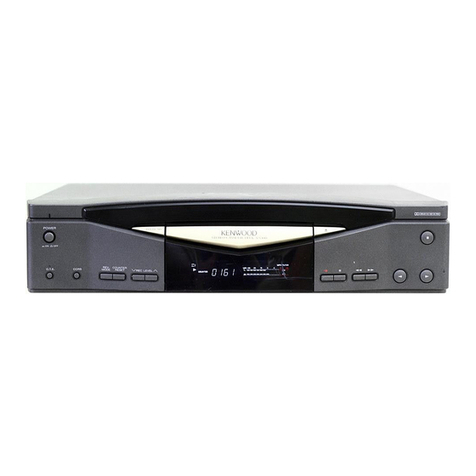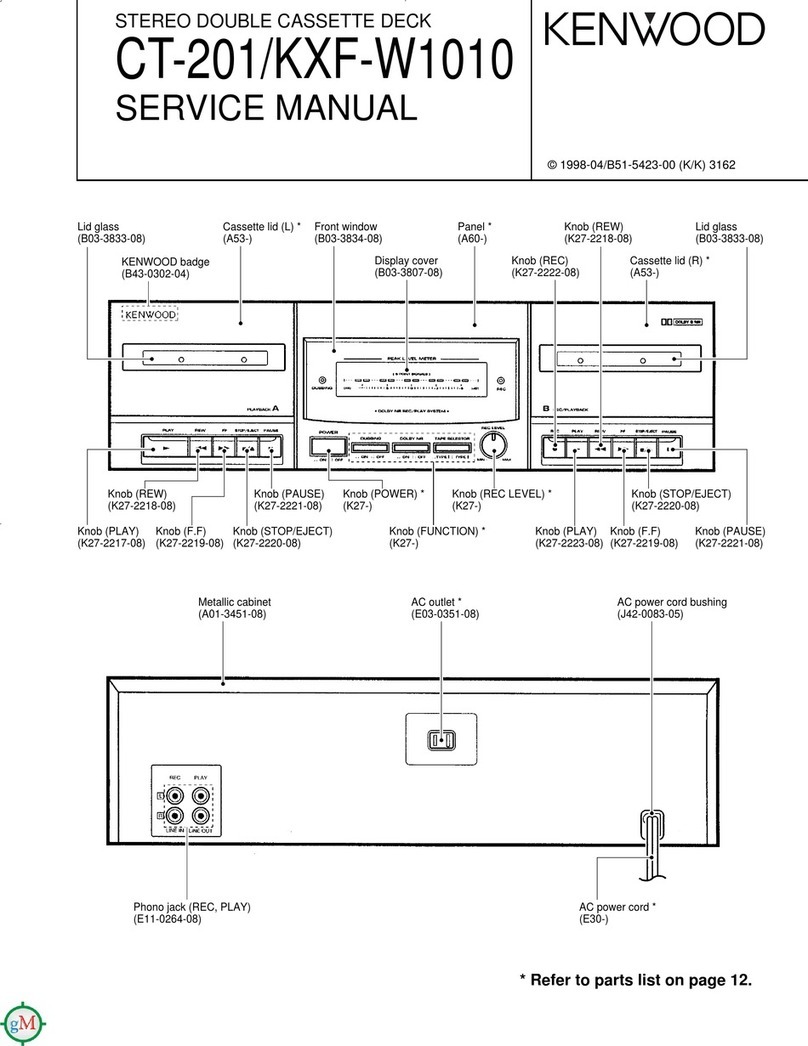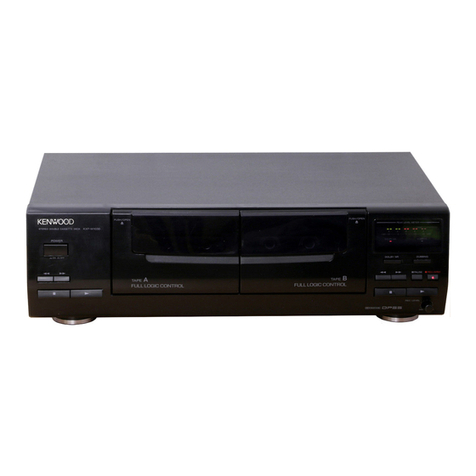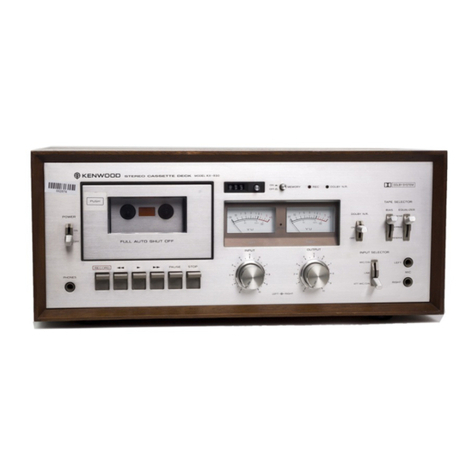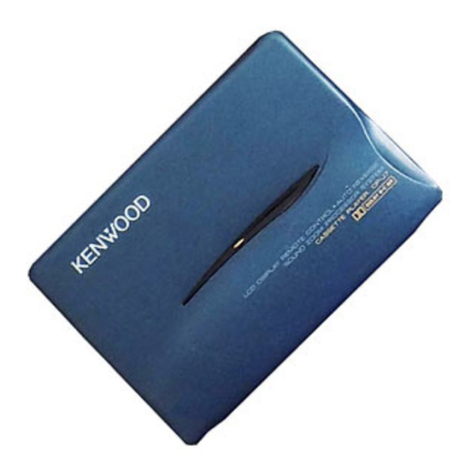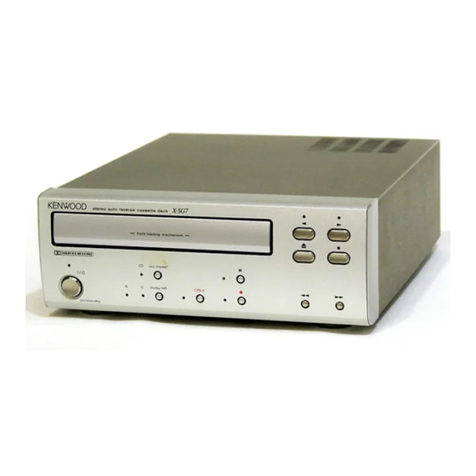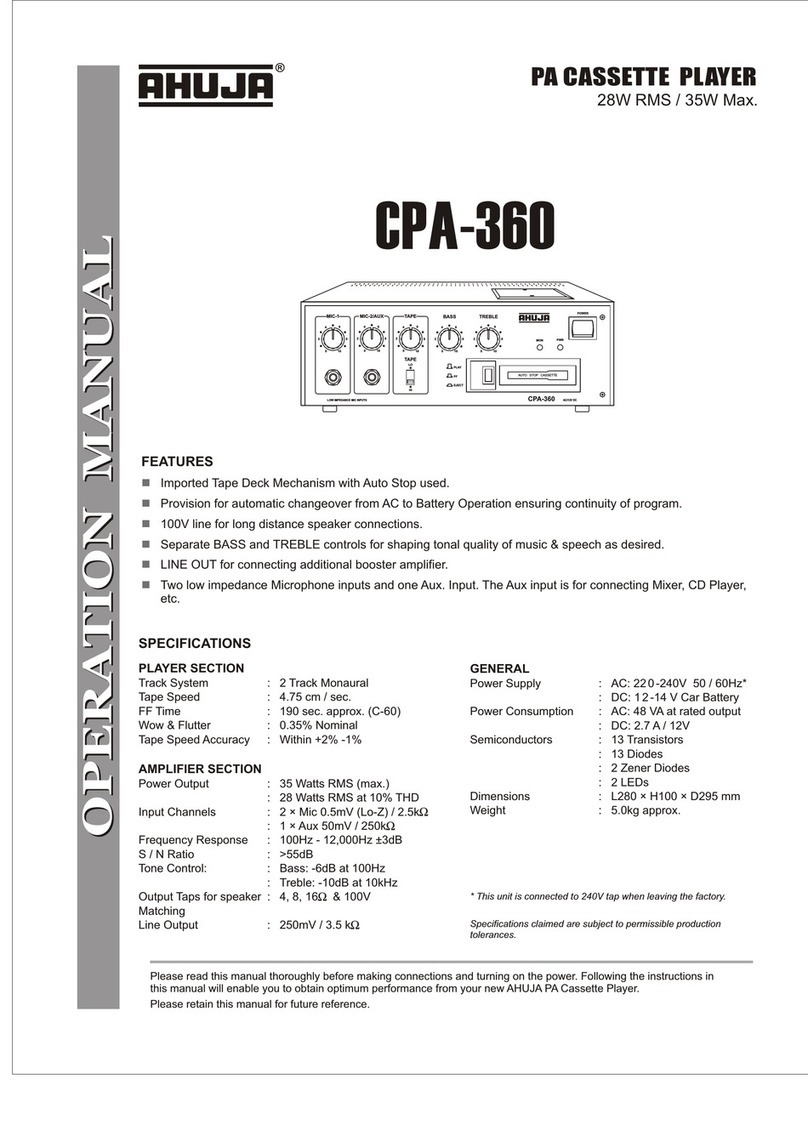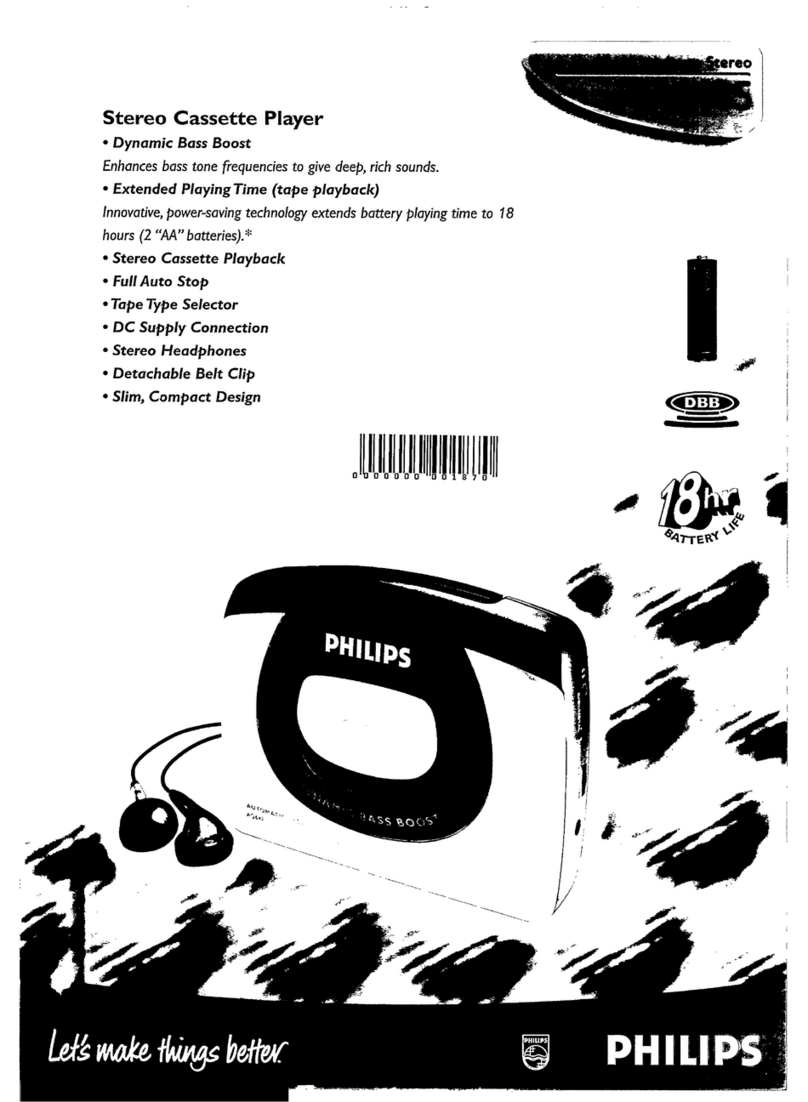How Kenwood Engineers Designed
The New KX-1030 With Extended
Frequency Response, Lower Noise %
And Lower Distortion Using A
Three-Head Design
inches). It is this minute and optimum
gap width that is largely responsible for
the extended frequency range and wider
dynamic range of this cassette deck. In
addition, the depth of the head gap is
maintained at 100 microns for higher
playback sensitivity.
grams-em". Only when one compares
this with the kinetic energy of rotation
of conventional decks - which ranges
from 600 to 1700 grams-em? - can one
fully appreciate the importance of the
massive flywheel used in the KX-1030.
As a result of this high kinetic energy,
flutter (perceived audibly as a rapid
warbling of recorded sound), and wow
(perceived as a slower wavering of
musical pitch caused by mechanical
variations in the tape drive system) have
been reduced to the low level normally
found in high quality open-reel
machines.
•
•
Wow
&
Flutter Characteristics
High Power, High Torque DC Servo
Motor
While the use of a large flywheel in a
cassette deck's transport system con-
tributes significantly to stable and
accurate rotation of that drive system,
driving such a heavy flywheel requires a
motor with high rotational torque.
Kenwood engineers have incorporated a
motor with a rotational torque of 50
gram centimeters in the KX-1030 -
compared with approximately 20 gram
centimeters of torque provided by the
motors used in many other cassette
decks. Another important feature of
this well designed DC servo motor is
that a sudden increase in load (often
encountered in cassette drive systems
when less-than-perfect cassette tape
housings are used) has a negligible effect
upon the stability of the tape drive
system.
Although some dual purpose record/
playback heads incorporated in conven-
tional cassette decks provide good per-
formance, the use of combination heads
to record and reproduce tapes impose a
limitation in terms of frequency re-
sponse and dynamic range.
The most important factor that deter-
mines recording and playback response
is the gap width of the head. For
example, the gap width of a playback
head is a critical factor in determining
the high-frequency capability of cassette
decks. A signal recorded on tape may be
thought of as having a wavelength which
is inversely proportional to its frequen-
cy. As the signal frequency increases, its
wavelength becomes shorter and
shorter. When the wavelength to be
recorded approaches the width of the
playback head gap in length, the play-
back head can no longer produce an
output, and response falls off drastically
at that point.
Ordinary Rec./P.B. Head (Wide Gap Width)
The Kenwood dual combination
record/playback head
Frequency Responseof Rec. Head Using
Various Gap Widths
rrn
rr-l iT I
e
Gap WIdth
0 llf
Reco~
tOad
al333111
.
6
-=t
4
110
4.
2
Ip;j
1-=/'
2.
,
BI"
.
,.
0
II
I
I
4-1_
II
6
/
.~_ l I.~ .;
11111I
IIi
+--1
1111'11'
II'
i
I'
10
10
01
[}'SlOrtlon(%)
Output vsDistortion of Rec. Head Using
Different Gap Widths
A Precision Die-Cast Zinc Alloy
Flywheel With A Mass Of 150
Grams Provides Greater Inertia And
More Accurate Tape Motion
/ ShO< wavelength rnaqnetic field
~~==
Gap width
KX-1030 Playback Head (Narrow Gap Width)
___ -Playback head
"Short wavelength magnetic field
.L.
---H~
<,
Magnetic tape
Gap width
.In order to extend the frequency range,
the gap width of the playback head used
in the KX-1030 is held to less than 1.5
microns (a micron is equal to 0.00004
Another aspect of the extraordinary
performance of the new KX-1030 arises
from its ability to provide accurate,
constant rotation of the tape capstan
shaft - the most important element in
driving the tape. Kenwood engineers
recognized that the tape-drive motor
alone cannot absorb speed variations in
the tape drive system. Accordingly, they
incorporated a massive flywheel (with a
weight of 150 grams) to increase kinetic
energy of rotation to a high 5,460
